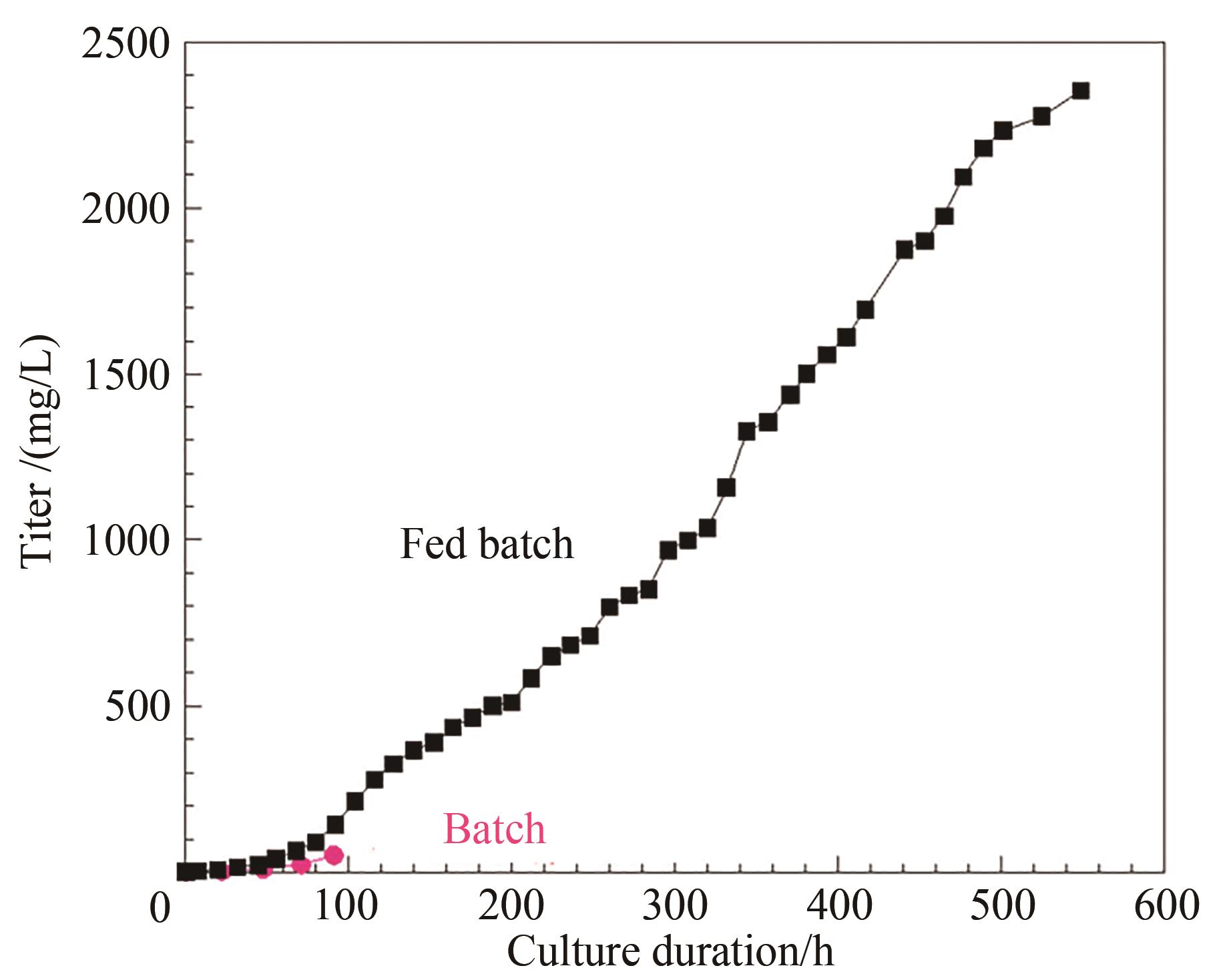Synthetic Biology Journal ›› 2021, Vol. 2 ›› Issue (4): 482-496.DOI: 10.12211/2096-8280.2021-051
• Invited Review • Previous Articles Next Articles
Contributions to the booming biologics industrialization —a dedicated pioneer: Professor. Daniel I. C. Wang
XIE Liangzhi1,2
- 1.Beijing Protein and Antibody R&D Engineering Center,Sinocelltech Ltd. ,Beijing 100176,China
2.Beijing Antibody Research Key Laboratory,Sino Biological Inc. ,Beijing 100176,China
-
Received:2021-04-26Revised:2021-08-02Online:2021-09-10Published:2021-08-31
生物药产业蓬勃发展早期的奠基性系统开发——缅怀王义翘教授的开创性研究和成就
谢良志1,2
- 1.北京市蛋白和抗体研发及制备工程技术研究中心,北京神州细胞生物技术集团股份公司,北京 100176
2.单克隆抗体上游研发技术北京市重点实验室,北京义翘神州科技股份有限公司,北京 100176
-
作者简介:谢良志 (1966—),男,博士,教授,主要从事生物化工、动物细胞培养、大分子生物药、基因工程疫苗、抗病毒中和抗体药物研发、临床研究和大规模生产及管理。E-mail:liangzhi@yahoo.com
CLC Number:
Cite this article
XIE Liangzhi. Contributions to the booming biologics industrialization —a dedicated pioneer: Professor. Daniel I. C. Wang[J]. Synthetic Biology Journal, 2021, 2(4): 482-496.
谢良志. 生物药产业蓬勃发展早期的奠基性系统开发——缅怀王义翘教授的开创性研究和成就[J]. 合成生物学, 2021, 2(4): 482-496.
share this article
Add to citation manager EndNote|Ris|BibTeX
URL: https://synbioj.cip.com.cn/EN/10.12211/2096-8280.2021-051
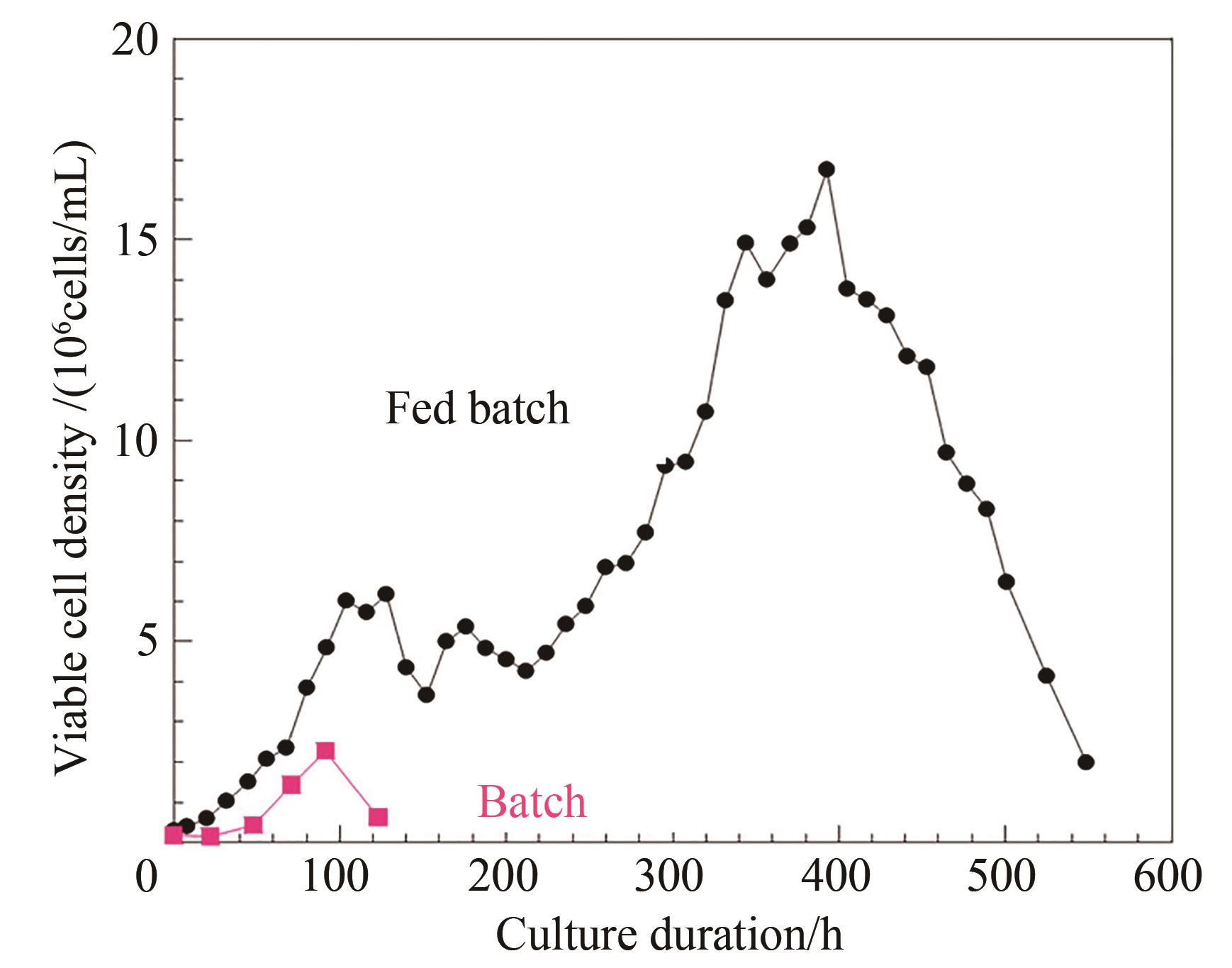
Fig. 2 Comparison of the viable cell density in the perfusion culture developed on stoichiometric balance and feed control to that observed in the batch process
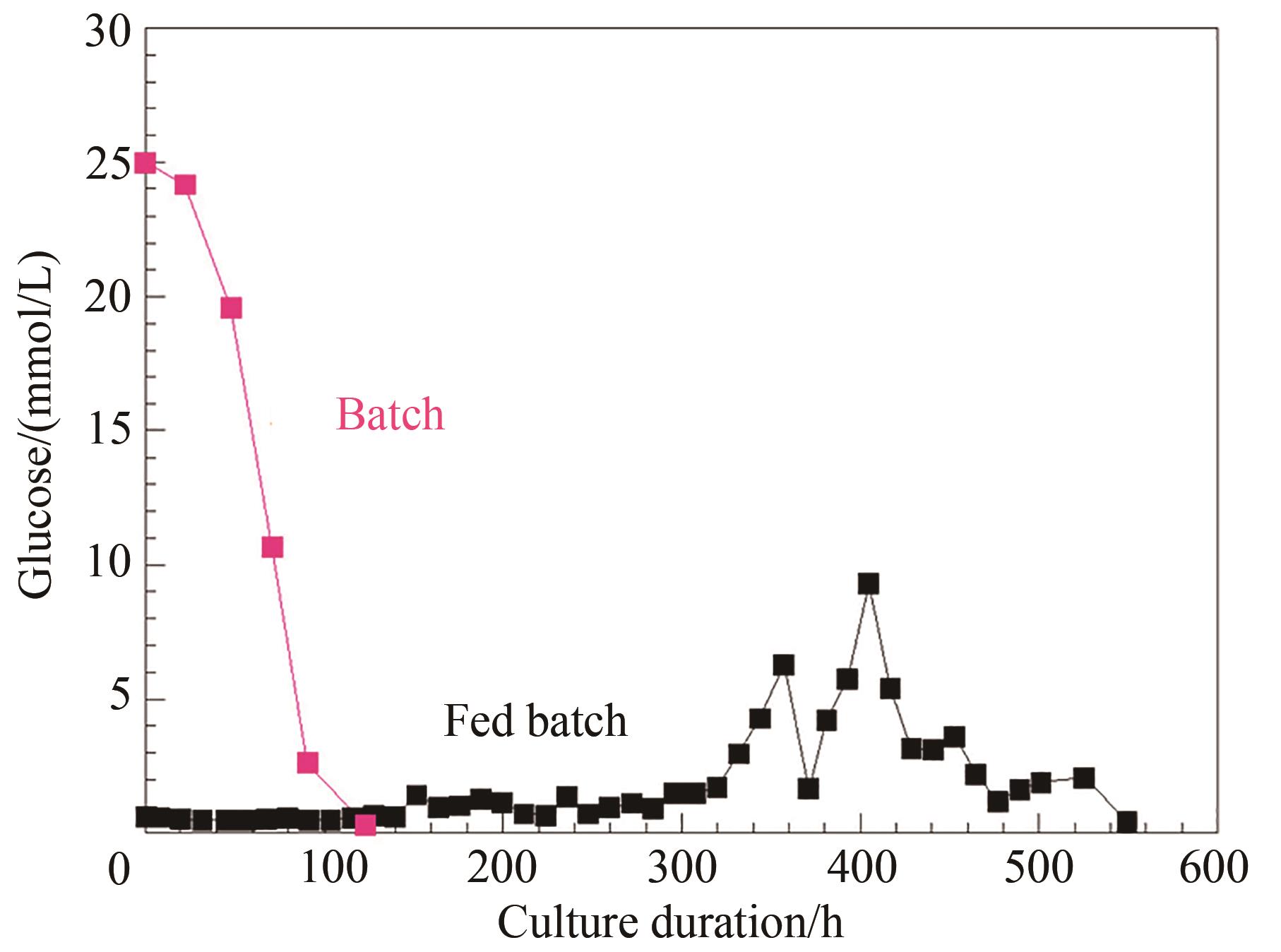
Fig. 4 Comparison of the glucose control index of the perfusion culture developed on stoichiometric balance and feed control with that of the batch process
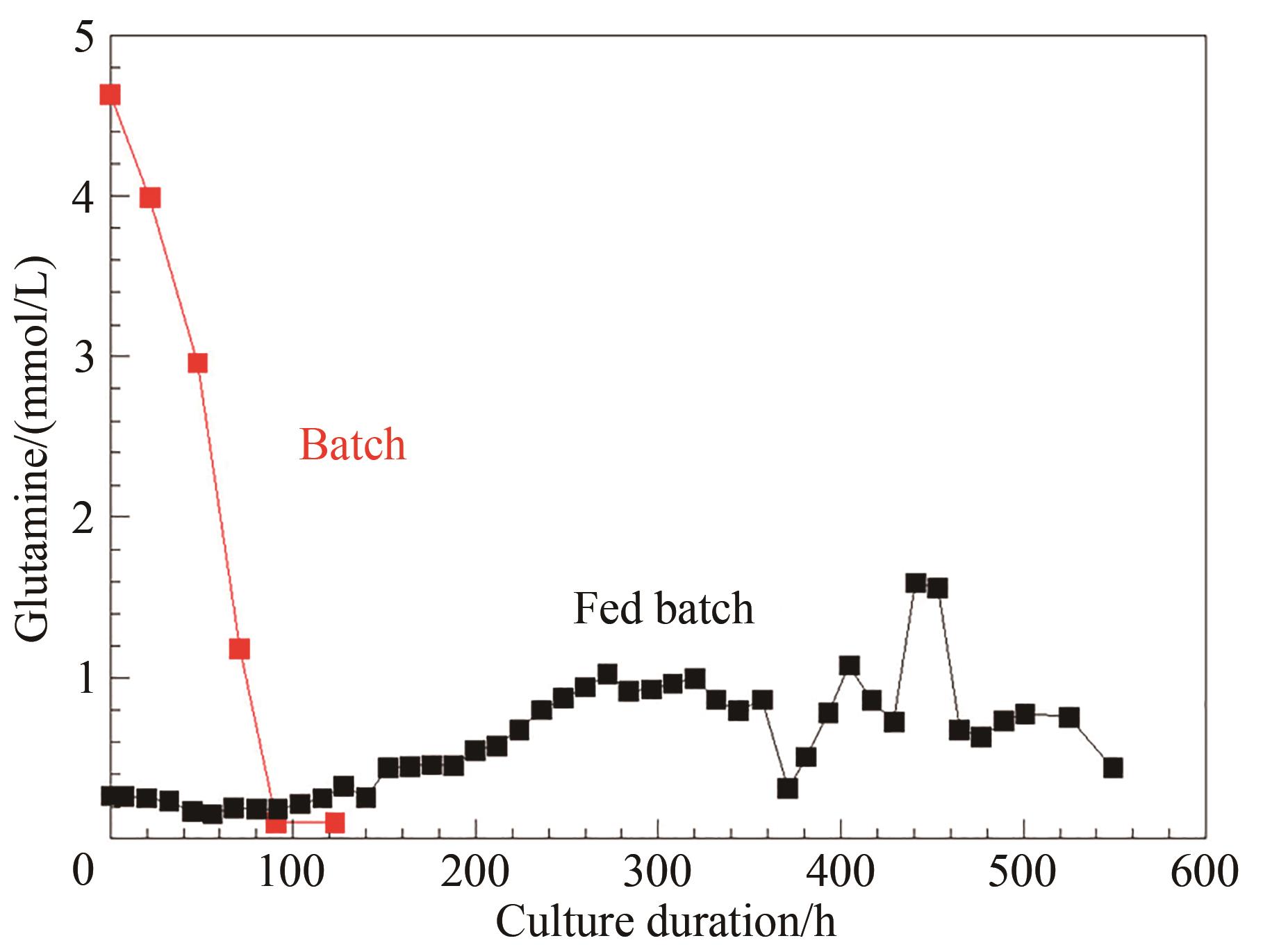
Fig. 5 Comparison of the glutamine control for the perfusion culture developed on stoichiometric balance and feed control with that of the batch process
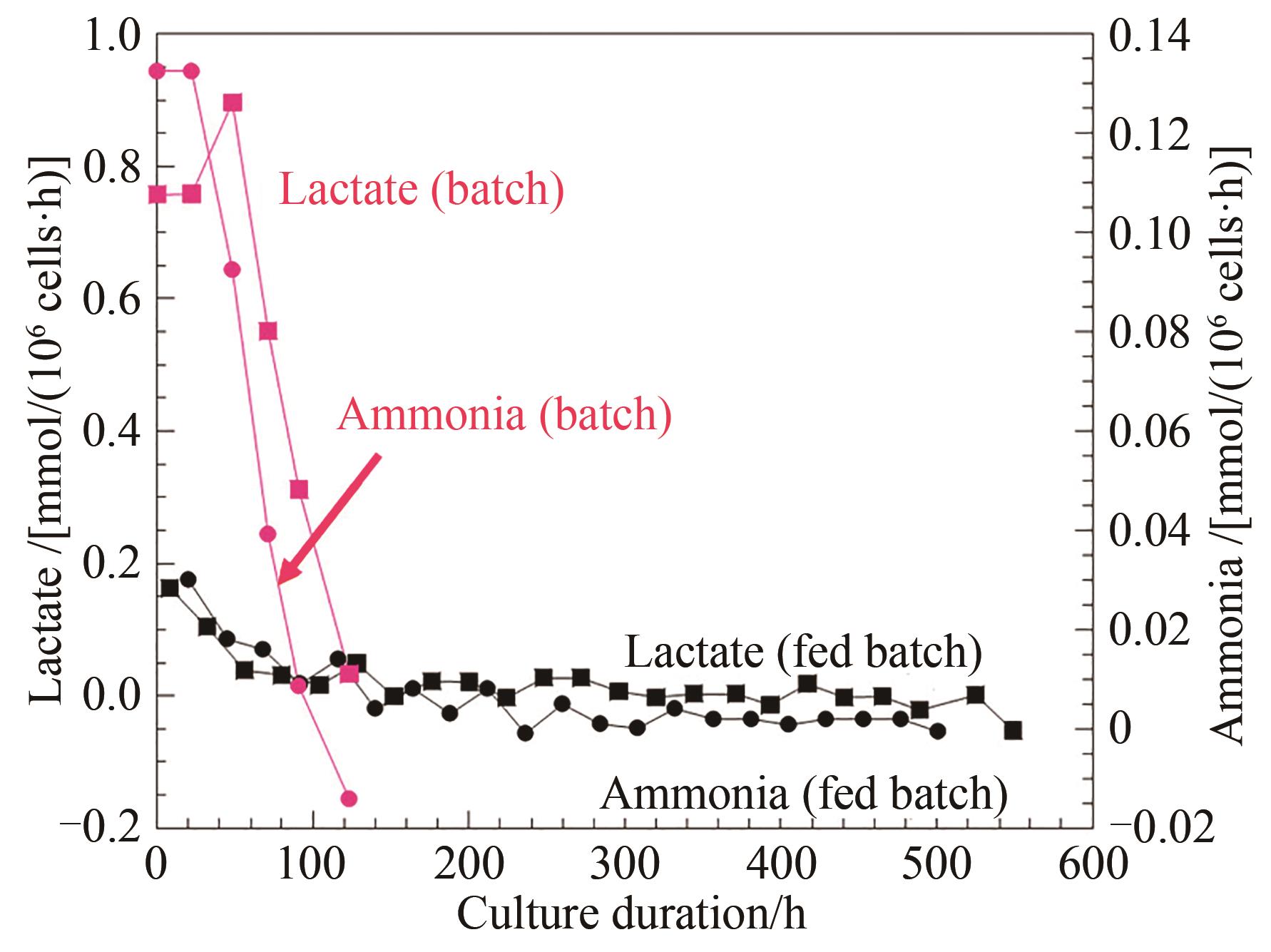
Fig. 6 Comparison of the byproduct lactic acid and ammonia production for the perfusion developed on stoichiometric balance and feed control with those of the batch process
| 68 | LJUNGGREN J, HAGGSTROM L. Glutamine limited fed-batch culture reduces ammonium ion production in animal cells[J]. Biotechnology Letters, 1990, 12: 705-710. |
| 69 | LJUNGGREN J, HAGGSTROM L. Glutamine limited fed-batch culture reduces the overflow metabolism of amino acids in myeloma cells[J]. Cytotechnology, 1992, 8: 45-56. |
| 70 | MILLER W M, WILKE C R, BLANCH H W. The transient responses of hybridoma cells to nutrient additions in continuous culture: II. glutamine pulse and step changes[J]. Biotechnology and Bioengineering, 1989, 33: 487-499. |
| 71 | LAZO P A. Amino acids and glucose utilization by different metabolic pathways[J]. European Journal of Biochemistry, 1981, 117: 19-25. |
| 72 | LUAN Y T, MUTHARASAN R, MAGEE W E. Effect of various glucose/glutamine ratios on hybridoma growth, viability, and monoclonal antibody formation[J]. Biotechnology Letters, 1987, 9: 535-538. |
| 73 | LJUNGGREN J, HAGGSTROM L. Catabolic control of hybridoma cells by glucose and glutamine limited fed batch cultures[J]. Biotechnology and Bioengineering, 1994, 44: 808-818. |
| 74 | LUAN Y T, MUTHARASAN R, MAGEE W E. Factors governing lactic acid formation in long term cultivation of hybridoma cells[J]. Biotechnology Letters, 1987, 9: 751-756. |
| 75 | LUAN Y T, MUTHARASAN R, MAGEE W E. Strategies to extend the longevity of hybridomas in culture and promote yield of monoclonal antibodies[J]. Biotechnology Letters, 1987c, 9: 691-696. |
| 76 | MILLER W M, BLANCH H W, WILKE C R. A kinetics analysis of hybridoma growth and metabolism in batch and continuous suspension culture: effect of nutrient concentration, dilution rate, and pH[J]. Biotechnology and Bioengineering, 1988, 32: 947-965. |
| 77 | MILLER W M, WILKE C R and BLANCH H W. Transient responses of hybridoma cells to nutrient additions in continuous culture: 1. glucose pulse and step changes[J]. Biotechnology & Bioengineering, 1989, 33: 477-486. |
| 78 | XIE L Z. Stoichiometric medium design and nutritional control in fed-batch cultivation of animal cells[D]. Cambridge, MA: Massachusetts Institute of Technology, 1997. |
| 79 | XIE L Z, WANG D I C. High density and high monoclonal antibody production through medium design and rational control in a bioreactor[J]. Biotechnology and Bioengineering, 1996, 51:725-729. |
| 80 | XIE L Z, WANG D I C. Integrated approaches to the design of media and feeding strategies for fed-batch cultures of animal cells[J]. Trends in Biotechnology, 1997, 15:109-113. |
| 81 | CHEN K Q, LIU Q, XIE L Z, et al. Engineering of mammalian cell line for reduction of lactate formation and high monoclonal antibody production[J]. Biotechnology and Bioengineering, 2001, 72:55-61. |
| 1 | TRAFTON A. Daniel Wang Institute Professor and pioneer in biochemical engineering, dies at 84.[N/OL]. MIT News, 2020-09-02. . |
| 2 | Baltimore JAFFE R., Harbison, Wang elevated to ranks of Institute Professors[N/OL]. MIT News, 1995-06-07. . |
| 3 | HATTON T A. DANIEL I.C. Wang: A tribute to an inspirational leader and colleague[J]. Biotechnology and Bioengineering, 2006, 95: 262-269. |
| 4 | ELLIS G. MIT’s Daniel I. C. Wang, co-founder of AIChE’s society for biological engineering, dies at 84[N/OL]. AIChE Biochemical Engineer ChEnected News, 2020-09-08. . |
| 5 | PRESTON L, HATCH R. Role of NSF engineering research centers in development of the field of bioengineering[EB/OL]. 5-E(a) Emerging Fields Catalyzed by ERCs. 2020, . |
| 6 | FISCHER S. Brain storm: David Berry profile[N/OL]. Published on Boston Magazine, 2011-04-20, . |
| 7 | ZHANG Y H P. Biofuel researcher wins biotechnology award[EB/OL]. Virginia Tech Daily Articles. [2010-01-04], . |
| 8 | CHUCK A S, DESHPANDE R R, DISTLER A R, et al. Commercial production of recombinant erythropoietins[M]//MOLINEUX G, FOOTE M A, ELLIOTT S G. Erythropoietins and erythropoiesis. Switzerland: Birkhauser Verlag 2003. |
| 9 | BOEDEKER B G. Production processes of licensed recombinant factor Ⅷ preparations[J]. Semin Thromb Hemost, 2001, 27:385-394. |
| 10 | AFEYAN N, COONEY C L. Professor Daniel I.C. Wang: a legacy of education, innovation, publication, and leadership[J]. Biotechnology and Bioengineering, 2006, 95: 206-217. |
| 11 | A L van WEZEL. Growth of cell strains and primary cells on microcarriers in homogeneous culture[J]. Nature, 1967, 216:64-65. |
| 12 | A L van WEZEL. Microcarrier cultures of animal cells[M]// KRUSE P F and PATTERSON M R. Tissue culture, methods and applications. New York: Academic Press, 1973: 372-377. |
| 82 | BIBILA T A, RANUCCI C S, GLAZOMITSKY K, et al. Monoclonal antibody process development using medium concentrates[J]. Biotechnology Progress, 1994, 10: 87-96. |
| 83 | BIBILA T A, ROBINSON D K. In pursuit of the optimal fed-batch process for monoclonal antibody production[J]. Biotechnology Progress, 1995, 11: 1-13. |
| 84 | BUSHELL M E, BELL S L, SCOTT M F, et al. Enhancement of monoclonal antibody yield by hybridoma fed-batch culture, resulting in extended maintenance of viable cell population[J]. Biotechnology and Bioengineering, 1994, 44: 1099-1106. |
| 85 | JO E C, PARK H J, PARK J M, et al. Balanced nutrient fortification enables high-density hybridoma cell culture in batch culture[J]. Biotechnology and Bioengineering, 1990, 36: 717-722. |
| 86 | JO E, PARK H, KIM D, et al. Repeated fed-batch culture of hybridoma cells in nutrient-fortified high density medium[J]. Biotechnology and Bioengineering, 1993, 42: 1229-1237. |
| 87 | ZHOU W, REHM J, HU W S. High viable cell concentration fed-batch cultures of hybridoma cells through on-line nutrient feeding[J]. Biotechnology and Bioengineering, 1995, 46: 579-587. |
| 88 | TREMBLAY M D, PERRIER M, CHAVARIE C, et al. Optimization of fed-batch culture of hybridoma cells using dynamic programming: single and multi feed cases[J]. Bioprocess Engineering, 1992, 7: 229-234. |
| 89 | XIE L Z, WANG D I C. Stoichiometric analysis of animal cell growth and its application in medium design[J]. Biotechnology and Bioengineering, 1994, 43:1164-1174. |
| 90 | WOHLPART D, KIRWAN D and GAINER J. Effects of cell density and glucose and glutamine levels on the respiration rates of hybridoma cells[J]. Biotechnology and Bioengineering, 1990, 36: 630-63. |
| 91 | ZENG A P, DECKWER W D. Mathematical modeling and analysis of glucose and glutamine utilization and regulation in cultures of continuous mammalian cells[J]. Biotechnology and Bioengineering, 1995, 47: 334-346. |
| 92 | ZIELKE H R, OZAND P T, TILDON J T, et al. Reciprocal regulation of glucose and glutamine utilization by human diploid fibroblasts[J]. Journal of Cellular Physiology, 1978, 95: 41-48. |
| 93 | XIE L Z, WANG D I C. Fed-batch cultivation of animal cells using different medium design concepts and feeding strategies[J]. Biotechnology and Bioengineering, 1994, 43:1175-1189. |
| 94 | XIE L Z, WANG D I C. Applications of improved stoichiometric model in medium design and fed-batch cultivation of animal cells in bioreactor[J]. Cytotechnology, 1994, 15: 17-29 |
| 95 | XIE L Z, NYBERG G, GU X, et al. Gamma interferon production and quality in stoichiometric fed-batch cultures of Chinese hamster ovary cell under serum-free conditions[J]. Biotechnology and Bioengineering, 1997, 56:577-582. |
| 13 | van HEMERT P, KILBURN D G, van WEZEL A L. Homogeneous cultivation of animal cells for the production of virus and virus products[J]. Biotechnology and Bioengineering, 1969, 11:875-885. |
| 14 | HORNG C, McLIMANS W. Primary suspension culture of calf anterior pituitary cells on microcarrier surface[J]. Biotechnology and Bioengineering, 1975, 17:713-732. |
| 15 | SPIER R E, WHITESIDE J P. The production of foot-and-mouth disease virus from BHK 21 C13 cells grown on the surface of glass spheres[J]. Biotechnology and Bioengineering, 1976,18: 649-657. |
| 16 | LEVINE D W, WANG J S, WANG D I C, et al. Microcarrier cell culture: New method for research scale application[J]. Somatic Cell Genetics, 1977, 3:149. |
| 17 | LEVINE D W, WANG D I C, THILLY W G. Optimization of growth surface parameters in microcarrier cell culture[J]. Biotechnology and Bioengineering, 1979a, 21:821. |
| 18 | LEVINE D W, THILLY W G, WANG D I C. Parameters affecting cell growth on reduced charge microcarriers[J]. Developments in Biological Standardization, 1979b, 42:159. |
| 19 | GIARD D J, THILLY W G, WANG D I C, et al. Virus production with a newly developed microcarrier system[J]. Applied and Environmental Microbiology, 1977, 34:668. |
| 20 | GIARD D J, LOEB D H, THILLY W G, et al. Human interferon production with diploid fibroblast cells grown on microcarriers[J]. Biotechnology and Bioengineering, 1979, 21:433. |
| 21 | GIARD D J, FLEISCHAKER R J, SINSKEY A J, et al. Large-scale production of human fibroblast interferon[J]. Developments in Industrial Microbiology, 1981, 22:299. |
| 22 | HU W S, MEIER J, WANG D I C. A mechanistic analysis of the inoculums requirement for the cultivation of mammalian cells on microcarriers[J]. Biotechnology and Bioengineering, 1984, 27:585. |
| 23 | HU W S, WANG D I C. Serial propagation of mammalian cells on microcarriers[J]. Biotechnology and Bioengineering, 1985, 27:1466. |
| 24 | HU W S, WANG D I C. Mammalian cell culture technology: a review from an engineering perspective[M]//THILLY W G. Mammalian cell technology.Stoneham, MA: Butterworth, 1986: 167. |
| 25 | HU W S, MEIER J, WANG D I C. Use of surface aerator to improve oxygen transfer and cell growth in cell culture[J]. Biotechnology and Bioengineering, 1986, 28:122. |
| 26 | HU W S, WANG D I C. Selection of microcarrier diameter or the cultivation of mammalian cells on microcarriers[J]. Biotechnology and Bioengineering, 1987, 30:548. |
| 27 | CROUGHAN M S, WANG D I C. Growth and death in over-agitated microcarrier cell culture[J]. Biotechnology and Bioengineering, 1989, 33:731. |
| 28 | CROUGHAN M S, WANG D I C. Hydrodynamic effects on animal cells in microcarrier bioreactors[M]//HO C S, WANG D I C. Animal cell bioreactor.Stoneham, MA: Butterworth-Heinemann Press, 1991: 213. |
| 96 | CHIOU T W, HSIEH Y C, HO C S. High density culture of insect cells using rational medium design and feeding strategy[J]. Bioprocess Engineering, 2000, 22: 483-491 |
| 97 | XIE L Z, WANG D I C. Material balance studies on animal cell culture metabolism using a stoichiometrically based reaction network[J]. Biotechnology and Bioengineering, 1996, 52:579-590. |
| 98 | XIE L Z, WANG D I C. Energy metabolism and ATP balance in animal cell cultivation using a stoichiometrically based reaction network[J]. Biotechnology and Bioengineering, 1996, 52:591-601. |
| 99 | GOETZE A M, LIU Y D, ZHANG Z, et al. High-mannose glycans on the Fc region of therapeutic IgG antibodies increase serum clearance in humans[J]. Glycobiology, 2011, 21: 949-959 |
| 100 | LUO C, CHEN S, XU N, et al. Glycoengineering of pertuzumab and its impact on the pharmacokinetic/pharmacodynamic properties[J]. Scientific Reports. 2017, 7: 46347 |
| 101 | LIU L. Antibody glycosylation and its impact on the pharmacokinetics and pharmacodynamics of monoclonal antibodies and Fc-fusion proteins[J]. Journal of Pharmaceutical Sciences, 2015, 104: 1866-1884 |
| 102 | REUSCH D, TEJADA M L. Fc glycans of therapeutic antibodies as critical quality attributes[J]. Glycobiology, 2015, 25: 1325-1334. |
| 103 | SHINKAWA T, NAKAMURA K, YAMANE N, et al. The absence of fucose but not the presence of galactose or bisecting N-acetylglucosamine of human IgG1 complex-type oligosaccharides shows the critical role of enhancing antibody-dependent cellular cytotoxicity[J]. Journal of Biological Chemistry, 2003, 278:3466-3473. |
| 104 | SHIELDS R L, LAI J, KECK R, et al. Lack of fucose on human IgG1 N-linked oligosaccharide improves binding to human Fc RIII and antibody-dependent cellular toxicity[J]. Journal of Biological Chemistry, 2002, 277: 26733-26740. |
| 105 | HARMON B J, GU X, WANG D I C. Rapid monitoring of site-specific glycosylation microheterogeneity of recombinant human interferon-gamm[J]. Analytical Chemistry, 1996, 68:1465-147 |
| 106 | GU X J, XIE L, HARMON B J, et al. Influence of primatone RL supplementation and sialyation of recombinant human interferon gamma produced by Chinese hamster ovary culture using serum-free media[J]. Biotechnology and Bioengineering, 1997, 56:353-360. |
| 107 | GU X J, HARMON B J, WANG D I C. Site-and-branch-specific sialyation of recombinant interferon-gamma in Chinese hamster ovary cell culture[J]. Biotechnology and Bioengineering, 1997a, 55:390-398. |
| 108 | GU X J, HARMON B J, WANG D I C. Monitoring and characterization of glycoprotein quality in animal cell cultures[M]// GALINDOE, RAMIREZ O T. Advances in bioprocessing engineering II. In advances in bioprocess engineering II. Netherlands: Kluwer Academic Publisher, 1998: 1-24. |
| 109 | GU X J. Characterization and improvement of interferon-[gamma] glycosylation in Chinese hamster ovary cell culture[D]. Cambridge, MA: Massachusetts Institute of Technology, 1997. |
| 110 | NYBERG G B, BALCARCEL R R, FOLLSTAD B D, et al. Metabolism of peptide amino acids by Chinese hamster ovary cells grown in a complex medium[J]. Biotechnology and Bioengineering, 1998, 62:324-335. |
| 29 | CROUGHAN M S, J-F HAMEL, WANG D I C. Hydrodynamic effects on animal cells grown in microcarrier cultures[J]. Biotechnology and Bioengineering, 1987, 29:130. |
| 30 | CROUGHAN M S, J-F HAMEL, WANG D I C. Effects of microcarrier concentration on animal cell culture[J]. Biotechnology and Bioengineering, 1988, 32:975. |
| 31 | CROUGHAN M S, SAYRE E, WANG D I C. Viscous reduction of turbulent damage in animal cell culture[J]. Biotechnology and Bioengineering, 1989, 33:862. |
| 32 | PERRY S D, WANG D I C. Fiber bed reactor design for animal cell culture[J]. Biotechnology and Bioengineering, 1989, 34:1. |
| 33 | CHIOU T W, MURAKAMI S, WANG D I C. A fiber-bed bioreactor for anchorage-dependent animal cell culture. part I: Bioreactor design and operations[J]. Biotechnology and Bioengineering, 1991, 37:755. |
| 34 | CHIOU T W. A modified airlift fiber-bed bioreactor for animal cell culture[D]. Cambridge, MA: Massachusetts Institute of Technology, 1992. |
| 35 | MURAKAMI S, CHIOU T W, WANG D I C. A fiber-bed bioreactor for anchorage-dependent animal cell culture. Part II: Scale-up potentials[J]. Biotechnology and Bioengineering, 1991, 37:762. |
| 36 | WANG D I C, SCHARER J, HUMPHREY A E. Kinetics of death of bacterial spores at elevated temperatures[J]. Applied Microbiology, 1964, 12:451. |
| 37 | WANG D I C, HUMPHREY A E, EAGLETON L C. Measurement of the kinetics of biological systems at elevated temperatures utilizing flow techniques[J]. Biotechnology and Bioengineering, 1964, 6:367. |
| 38 | WANG D I C, OCHOA A. Measurements on the interfacial areas of hydrocarbons in yeast fermentations and relationships to specific growth rates[J]. Biotechnology and Bioengineering, 1972, 14:345. |
| 39 | COONEY C L, WANG D I C, MATELES R I. Measurement of heat evolution during fermentation[J]. Biotechnology and Bioengineering, 1969, 11:269. |
| 40 | COONEY C L, WANG D I C, MATELES R I. Growth of enterobacter aerogenes under dual limitation in a chemostat[J]. Biotechnology and Bioengineering, 1976, 18:189. |
| 41 | COONEY C L, WANG H Y, WANG D I C. Computer-aided material balance for prediction of fermentation parameter[J]. Biotechnology and Bioengineering, 1977, 19:55. |
| 42 | WANG H Y, COONEY C L, WANG D I C. Computer-aided baker's yeast fermentation[J]. Biotechnology and Bioengineering, 1977, 19:69. |
| 43 | KENNEDY M J, WANG D I C, STEPHANOPOULOS G N. Estimating cell concentration in the presence of suspended solid: light scatter technique[J]. Biotechnology and Bioengineering, 1992, 40:875. |
| 44 | KENNEDY M J, THAKUR M S, WANG D I C, et al. Techniques for the estimation of cell concentration in the presence of suspended solids: a review[J]. Biotechnology Progress, 1992, 8:375. |
| 45 | LASKO D, WANG D I C. In situ fermentation monitoring with recombinant firefly luciferase[J]. Biotechnology and Bioengineering, 1993, 42:30-36. |
| 46 | LASKO D R, WANG D I C. On-line monitoring of intracellular ATP concentration in Escherichia coli fermentations[J]. Biotechnology and Bioengineering, 1996, 52:364-372. |
| 47 | AUNINS J G, WOODSON B A, HALE T K, et al. Effect of paddle impeller geometry on power input and mass transfer in small-scale animal cell culture vessels[J]. Biotechnology and Bioengineering, 1989, 34:1127. |
| 48 | NEWLAND M, KAMAL M N, GREENFIELD P F, et al. Ammonia inhibition of hybridomas propagated in batch, fed-batch, and continuous culture[J]. Biotechnology and Bioengineering, 1994, 43: 434-438. |
| 49 | DOYLE C AND BUTLER M. The effect of pH on the toxicity of ammonia to a murine hybridoma[J]. Journal of Biotechnology, 1990, 15: 91-100. |
| 50 | HANSEN H A, EMBORG C. Influence of ammonium on growth, metabolism, and productivity of a continuous suspension Chinese ovary cell culture[J]. Biotechnology Progress, 1994, 10: 121-124. |
| 51 | HASSELL T, GLEAVE S AND BUTLER M. Growth inhibition in animal cell culture the effect of lactate and ammonia[J]. Applied Biochemistry and Biotechnology, 1991, 30: 29-41. |
| 52 | OMASA T, HIGASHIYAMA K, SHIOYA S, et al. Effects of lactate concentration on hybridoma culture in lactate-controlled fed-batch operation[J]. Biotechnology and Bioengineering, 1992, 39: 556-564. |
| 53 | BORYS M C, LINZER D I H, PAPOUTSAKIS E T. Ammonia affects the glycosylation patterns of recombinant mouse placental lactogen-I by Chinese hamster ovary cells in a pH-dependent mammer[J]. Biotechnology and Bioengineering, 1994, 43: 505-514. |
| 54 | ANDERSEN D C, GOOCHEE C F. The effect of ammonia on the O-linked glycosylation of granulocyte colony-stimulated factor produced by Chinese hamster ovary cells[J]. Biotechnology and Bioengineering, 1995, 47: 96-105. |
| 55 | GLACKEN M W, FLEISCHAKER R J, SINSKEY A J. Reduction of waste product excretion via nutrient control: possible strategies for maximizing product and cell yields on serum in cultures of mammalian cells[J]. Biotechnology and Bioengineering, 1986, 28: 1376-1389. |
| 56 | GLACKEN M W. Development of mathematical descriptions of mammalian cell culture kinetics for the optimization of fed-batch bioreactors[D]. Cambridge, MA: Massachusetts Institute of Technology, 1987. |
| 57 | CHANG D Y S, WANG D I C. In situ removal of ammonia and lactate from suspension hybridoma cultures through electrical means[J]. Biotechnology and Bioengineering, 1995, 47:308-318. |
| 58 | CHANG D Y S, WANG D I C. Nutrient enrichment and in situ removal of ammonia and lactate through electrical means for suspension hybridoma cultures[J]. Biotechnology and Bioengineering, 1995, 47:319–326. |
| 59 | KATUNUMA N, HUZINO A, TOMINO I. Organ specific control of glutamine metabolism[M]//Weber G. Advances in enzyme regulation: vol 5. Bristol: Pergamon Press, 1967, 55-69. |
| 60 | KATUNUMA N, KATSUNUMA T, TOWATARI T, et al. Regulatory mechanisms of glutamine catabolism[M]//PRUSINER S and STADTMAN E R. The Enzymes of Glutamine Metabolism. New York: Academic Press, 1973: 227-258. |
| 61 | KOVACEVIC Z. The pathway of glutamine and glutamate oxidation in isolated mitochondria from mammalian cells[J]. Biochemical Journal, 1971, 125: 757-763. |
| 62 | LANKS K W. Glutamine is responsible for stimulating glycolysis by L929 cells[J]. Journal of cellular physiology, 1986, 126: 319-321. |
| 63 | LANKS K W AND LI P W. End products of glucose and glutamine metabolism by cultured cell lines[J]. Journal of cellular physiology, 1988, 135: 151-155. |
| 64 | LIN A, AGRAWAL P. Glutamine decomposition in DMEM: effect of pH and serum concentration[J]. Biotechnology Letters, 1988, 10: 695-698. |
| 65 | TRITSCH G L, MOORE G E. Spontaneous decomposition of glutamine in cell culture media[J]. Experimental Cell Research, 1962, 28: 360-364. |
| 66 | ZIELKE H R, ZIEKLE C L, OZAND P T. Glutamine: a major energy source for cultured mammalian cells[J]. Federation Proceedings, 1984, 43: 121-125. |
| 67 | KUROKAWA H, PARK Y S, LIJIMA S, et al. Growth characteristics in fed-batch culture of hybridoma cells with control of glucose and glutamine concentrations[J]. Biotechnology and Bioengineering, 1994, 44: 95-103. |
| 111 | NYBERG G B, BALCARCEL R R, FOLLSTAD B D, et al. Metabolic effects on recombinant interferon-g glycosylation in continuous culture of Chinese hamster ovary cells[J]. Biotechnology and Bioengineering, 1998, 63:336-347. |
| 112 | AUGENSTEIN D C, SINSKEY A J and WANG D I C. Effect of shear on the death of two strains of mammalian tissue cells[J]. Biotechnology and Bioengineering, 1971, 13: 409-418. |
| 113 | CROUGHAN M S. Hydrodynamic effects of animal cells in microcarrier bioreactors[D]. Cambridge, MA: Massachusetts Institute of Technology,1988. |
| 114 | ORTON D R. Quantitative and mechanistic effects of bubble aeration on animal cells in culture[D]. Cambridge, MA: Massachusetts Institute of Technology, 1993. |
| 115 | MEIER S J. Modeling sparging related death in animal cell bioreactors[D]. Cambridge, MA: Massachusetts Institute of Technology, 1998. |
| 116 | MEIER S J, HATTON T A, WANG D I C. Cell death from bursting bubbles: role of cell attachment to rising bubbles in sparged reactors[J]. Biotechnology and Bioengineering, 1999, 62:468-478. |
| 117 | MA N, CHALMERS J J, AUNINS J G, et al. Quantitative studies of cell-bubble interactions and cell damage at different pluronic F-68 and cell concentrations[J]. Biotechnology Progress, 2004, 20:1183-1191. |
| [1] | SHAO Mingwei, SUN Simian, YANG Shimao, CHEN Guoqiang. Bioproduction based on extremophiles [J]. Synthetic Biology Journal, 2024, 5(6): 1419-1436. |
| [2] | Jiangnan CHEN, Xiaoning CHEN, Xinyi LIU, Wei WAN, Yixin ZHANG, Zihao ZHANG, Yifei ZHENG, Taoran ZHENG, Xuan WANG, Ziyu WANG, Xu YAN, Xu ZHANG, Fuqing WU, Guoqiang CHEN. Engineering Halomonas spp. for next generation industrial biotechnology (NGIB) [J]. Synthetic Biology Journal, 2020, 1(5): 516-527. |
| Viewed | ||||||
|
Full text |
|
|||||
|
Abstract |
|
|||||

